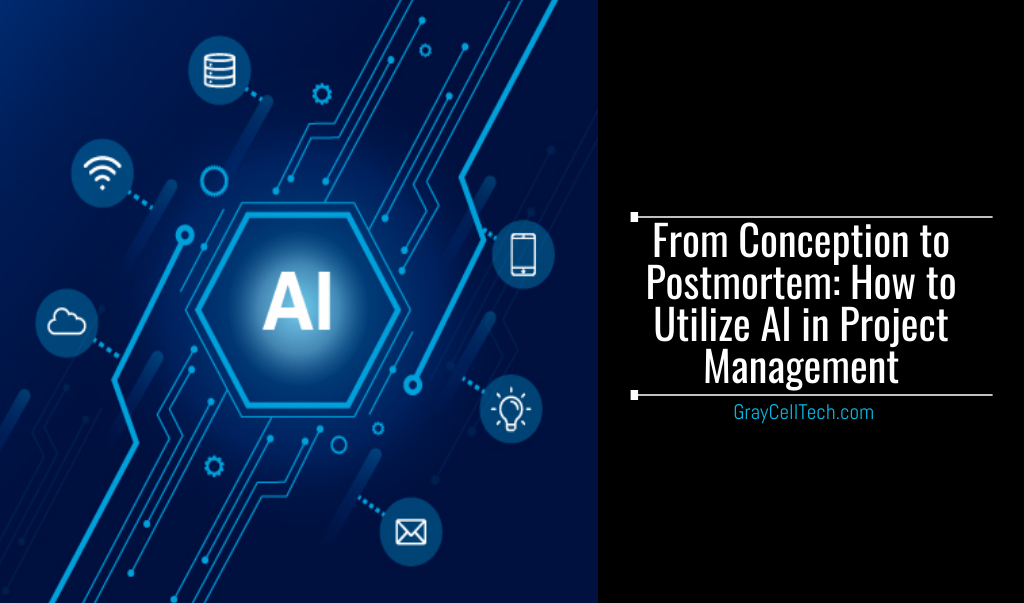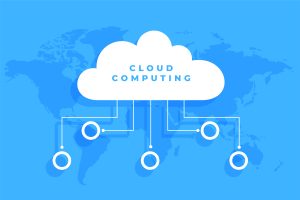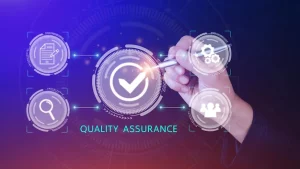Artificial Intelligence has come a long way from when Alan Turing first posed his question: “Can machines think?” This wide ranging branch of computer science has made a significant impact on many fields like medicine, transportation, and communication. These various apps and machines help us keep our days moving smoothly, and have even made their way into our day to day office work. We now have programs and tools that help us manage projects efficiently and accurately.
Project management has long struggled with the limitations of its workers. Meeting deadlines, work quality, budget — these are all things that plague any project. Managing projects is especially heavy for managers who are handling multiple teams and projects at the same time. Keeping track of everything and everyone is like a mini project all on its own.
Injecting artificial intelligence into the project management sphere actually alleviates some of the burden. AI tools cut short the time people spend on certain tasks, helps maintain or even improve quality, and creates a seamless process that everyone could easily follow.
How Artificial Intelligence Began
The idea of artificial intelligence is not a modern construct, contrary to popular belief. It started in ancient times when philosophers ruminated that intelligence and thought operated as a system, and that human thinking is a process of mechanically manipulating symbols. Ancient myths were rife with stories of artificial beings that were endowed with intelligence by their god-like masters or by skilled craftsmen.
These led to the creation of the programmable digital computer in the 1940s. In the 1950s, Alan Turing came up with the Turing Test. With his question about a machine’s capacity to think, he proposed an imitation game. The point of it was to see if a machine could answer questions the way a human being would. The answers don’t necessarily have to be correct. The machine just needs to answer it as closely as possible to the way a human would.
The Dartmouth Conference of 1956 is widely accepted as the birth of artificial intelligence. The name “Artificial Intelligence” itself was coined during this conference, as well as its mission and its first key players.
In the decades following the Dartmouth Conference, large strides were made in the sphere of artificial intelligence. The golden years of AI saw the establishment of AI’s natural language. The first chatterbot named ELIZA was created during this time. She was able to carry out realistic conversations that many people were fooled into thinking they were conversing with an actual person. In reality, all ELIZA did was give pre-programmed responses and rearranged the statements said to her (applying a few programmed grammar rules), in order to respond to the human speakers. This age also saw the creation of the first full-scale humanoid robot named WABOT-1. It was created in Waseda University in Japan and could converse in Japanese.
AI in the Modern World
Today, it is all about Big Data. Big data is exactly what it sounds like: it is a massive amount of data that cannot be recorded, managed, and processed by using conventional processing tools. The emergence of big data drove advances in deep learning.
Deep learning is the part of machine learning that is based on artificial neural networks. Artificial neural networks loosely resemble the neural network of a brain. Except this artificial “brain” can rival the human brain in things like computer vision, answering trivia questions (some language processing engines can actually beat humans at answering trivia), and even game play.
Project Management

Project management is the process of achieving your client’s goals within a specified time frame — a challenging endeavor on its own. Working with time and budget constraints while trying to stay within the guidelines set by the clients and meeting their expectations can become burdensome. It has a beginning and an end with the objective to either create a unique product, or service.
The two forefathers of project management are Henry Gantt and Henri Fayol. Gantt used the Gantt chart as a project management tool and Fayol created the five management functions that formed part of the foundation of project management.
The modern project management era began in the 1950s among engineers. This developed from across different fields: mainly engineering, architecture and civil construction, and activities involving heavy defense.
There are currently different project management types depending on the industry or sector, and the size of the project. For example, the IT industry has IT project management; the construction industry has their own construction project management; and the biotech industry has biotechnology project management. All the different types of project management have the same focus: time, budget, and quality.
There are four Ps to project management: plan, process, people, and power. The project’s alignment to these four key aspects will determine the project’s success. Plan is the forecasting of activities. Process is how the project is approached and governed. People refer to the team and their dynamics and collaboration. Power governs your lines of authority and the policies and guidelines your project has to follow.
Artificial Intelligence in Project Management

Project management has five phases. And in each phase, artificial intelligence can lend a helping hand in making the whole endeavor easier and streamline everything in the process.
- Project Initiation
The first phase of a project is the initiation. This is the phase where you develop your business case and state a broader definition of your project, and create your project charter. Your charter will list all the details you need like your goals, the budget, and time limits. You will have to identify your stakeholders at this stage, as well. What the project initiation phase will not have are technical details.
While in the project initiation phase, using tools like enterprise wikis and knowledge bases goes a long way in collating and delivering your data as well as get everyone on the same page when it comes to information. Online tools with templates can help you create and streamline your project charter.
- Project Planning
The next stage is project planning. This is where you and your team get your heads together to lay out your project roadmap. This is when you are identifying your technical requirements, setting your goals, and creating a detailed project schedule.
An important guide to goal setting is to use SMART and CLEAR goals. SMART goals are perhaps the most popular type of goal setting method. These goals are specific, measurable, attainable, realistic, and timely. CLEAR goals are more geared towards the dynamic nature of the modern workplace. These goals are collaborative, limited, emotional, appreciable, and refinable.
Apart from goals, setting out your project timeline with your deliverables is another important ingredient in this phase, along with risk management and change management.
AI-powered tools like online Gantt charts, kanban boards, and the like will do wonders to ease the stress and lighten the load of both project managers and team members.
- Project Execution
Project execution is the phase where all the preparation and planning are put to use. This is where the team works to bring the project and its goals to life.
Your team carries out the plans made during the planning stage, gather resulting data, create your deliverables and then report to the stakeholders. This is where a lot of changes are made, issues are sussed out and fixed, and a whole slew of challenges are faced. At this stage, accurate gathering and reporting of data is very important, which is why having AI tools in your system that help monitor data and create reports are a godsend. Certain AI tools can monitor risk and issue estimates for budget and task duration making it easier to keep track of the schedule and be aware of possible risks.
- Project Monitoring and Controlling

This phase happens almost simultaneously with the execution phase. This phase ensures that the project goals and objectives are met. This is where you establish your Critical Success Factors (CSF) and your Key Performance Indicators (KPI). This is also where you ensure that you stay within budget and do not go beyond the allotted time for project completion.
Much like in the execution phase, various AI tools could be used here, as well. Monitoring and reporting tools are essential to this stage, especially when reporting on the CSFs and KPIs, keeping in mind that the goal of these steps is to prove that the project is successful.
- Project Closure
This is the final stage in the project life cycle — the phase where you have accomplished the final delivery. The project closure involves closing the contracts and completing all the necessary paperwork for the project.
This is also where the postmortem meetings happen. Postmortems are done to discuss the successes and issues encountered during the various phases of the project. Both qualitative and quantitative data are discussed during this meeting. This is where process improvement initiatives can spring from. It is like a scorecard for the concluded project and a way to celebrate the team’s success as much as it is a venue to discuss areas for improvement. It can also be an avenue to boost team morale and contribute to the cohesion of the team.
Using postmortem templates make postmortem meetings easier to prepare for and conduct. A good postmortem template will allow you to document all the necessary details and help your team learn from the mistakes made during the project to avoid repetition in future projects.
Conclusion
No matter which stage of a project, there is a tool that will make your life and your team’s life easier. These AI tools will positively impact not just the results of the project, but also the way your team works.






